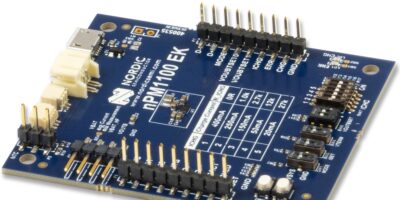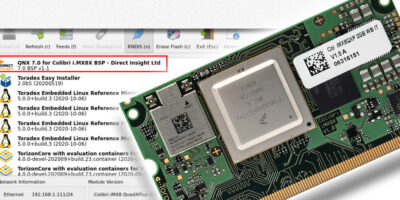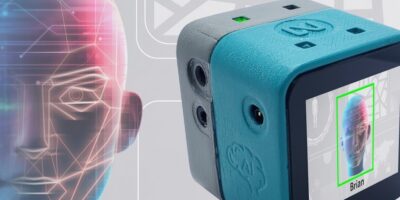Offering efficient reliability in confined spaces, the Nordic nPM1100 is a dedicated power management IC (PMIC) with configurable dual-mode buck regulator and integrated battery charger. It is designed as a complementary component to Nordic‘s nRF52 and nRF53 series of SoCs and to ensure reliable power supply and stable operation while maximising battery life through high efficiency and low quiescent currents. It can also be used as a generic PMIC device, says Rutronik, which has added the nPM1100 to its portfolio.
The compact (2.075 x 2.075 mm) WLCSP package can be used in wearable devices, connected medical devices, smart home sensors and controls, remote controls and game controllers, and other size constrained applications, advises Rutronik.
The integrated battery charger is designed to charge lithium-ion and lithium-polymer batteries to a selectable termination voltage of 4.1 or 4.2V and supports cell chemistries with a nominal voltage of 3.6 or 3.7V respectively. The PMICe features thermal battery protection and automatic selection of three charging modes: automatic trickle charge, constant current and constant voltage.
The maximum charging current can be selected via a resistor from 20 up to 400mA. The charger also has a discharge current limiter and is JEITA-compliant.
The high-efficiency step-down regulator can deliver up to 150mA of current at a selectable output voltage of 1.8, 2.1, 2.7 or 3.0V. It features soft start and automatic transition between hysteresis and PWM modes. It also enables a forced PWM mode to ensure clean operation.
The nPM1100 has a low quiescent current, 700nA typical, 470nA in ship mode (deactivates the current output) and 150mA current limit. The PMIC also has over-voltage protection and USB port detection for SDP, CDP and DCP. There is also a driver for charging and error indication LED and the nPM1100 evaluation kit.







